Cherry variety Julia
Gardeners of the northern regions have always dreamed of not only growing southern fruit trees in their gardens, but also getting good harvests from them. This became possible thanks to the labor of breeders who were able to instill frost resistance in thermophilic cherries. One of these varieties is called Julia. It was created at the Rossosh Zonal Experimental Gardening Station by sowing seeds of a loosely pollinated local variety Gin red. The pollinator is presumably Denisena yellow, to which the new cultivar is very similar in crown shape and other features. The authorship belongs to A.Ya. Voronchikhina. In 1992, the culture was included in the State Register of Plants of the Russian Federation in the Central Black Earth Region. It is most popular in the south of the Voronezh and Belgorod regions.
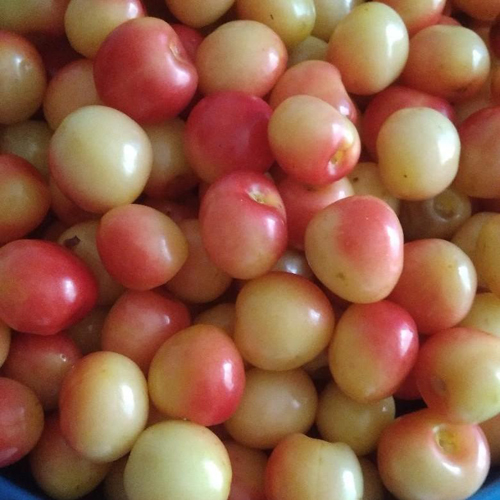
Description
The plant is characterized by fast and strong growth. Adult specimens of sweet cherries reach 7 - 8 meters in height. The crown is rather oval in shape, with drooping lower branches, dense, strongly leafy. The bark of the trunk at a young age is smooth, gray in color with a cherry sheen. With age, there is a slight roughness and peeling, weak longitudinal cracking. The defect of wood, which is called curliness, is very weak in Julia or is completely absent. Lentils on the trunk are short or long, wide, convex, often located. Thin shoots with long or very long internodes grow straight or with a slight bend. Young bark is initially yellowish-green, then a silvery-gray hue appears on the well-lit side. The bark of cherry shoots in the shade remains green. Lentils on shoots are small, frequent, whitish, oval or elongated-oval, cracking longitudinally. The flower buds of the variety are large - 5 - 6 mm, less often 4 mm, ovoid with a short-pointed apex, spaced or protruding.
Vegetative buds, from which the shoots develop, are even larger - 6 - 7 mm in length, in the form of a cone with a pointed tip, almost always spaced apart, with rare exceptions sticking out. Julia's leaves are elongated-oval or elongated-ovate. Length - 13 - 15 cm, width - 5 - 7 cm. The top is gradually pointed, less often sharply pointed. The base is rounded or arcuate. The surface of the plate is slightly shiny, dark green, has a slight deflection along the central vein, slightly wrinkled along the veins. The underside of the plate is grayish-green, with a sparse fleecy pubescence and a distinct mosaic of veins. The leaf is elastic, with a double-toothed edge. The petiole is very long - 3-4 cm, thin, covered with sparse villi, especially in the upper part. Anthocyanin coloration is weak. The glands are large, light, oval, in the amount of 1 or 2 pieces. The stipule is absent. The cherry inflorescence consists of 2 - 3 cupped or flat flowers, 3 - 3.5 cm in diameter. Julia's petals are dazzling white, rounded-oval or obovate, unclosed, sometimes slightly bent back. The pistil is almost flush with the stamens. The length of the stamens is 0.6 - 1.2 cm, the length of the pistil with the ovary is about 1.5 cm. The lower part of the calyx is slightly swollen, which makes it look like a jug or bell. Sepals are oblong-lanceolate, bent back and pressed against the calyx tube. In length, they slightly exceed the tube, the length of which is 5 - 6 mm. The tube, sepal, and pedicel are not colored; the limb of the sepals is whitish. The flowering of the variety occurs in the early middle periods.

Julia's fruits are very attractive, large - 7 - 8 grams. On young trees, it is slightly smaller - 5 - 6 grams. The height and width of the fruit is 2.2 cm, the thickness is 1.9 cm.Sweet cherries are round or heart-shaped, slightly flattened from the sides, with a rounded top. The funnel is shallow and wide; at the base of the fruit, the remainder of the pistil is visible in the form of a dot. The skin is thin, but strong, shiny, delicate creamy pink shade. The cover color in the form of a bright pink-red blush is spread over almost the entire surface. It is especially pronounced on the sunny side; in the shade, the blush is weaker. The stone is small - 0.47 grams, which is approximately 8.4% of the weight of the entire fruit. The shape of the stone is round or round-oval, the apex is rounded, the base is round. The color is brownish-yellow. It is not very easy to separate from the pulp. The peduncle is long - 4.2 - 4.7 cm, 1 mm thick. The pulp is creamy, slightly fibrous, moderately juicy, dense, which makes the berry a bigarro. The juice is colorless, slightly cloudy. Julia's taste is unremarkable, sweet, with a slight sourness. Assessment of tasters - 4.4 points.
Variety characteristics
- Cherry enters the fruiting period late - for 5 - 6 years. If the rootstock is Antipka, then the harvest may appear a year earlier - 4 - 5 years after planting;
- fruits ripen in late June - early July;
- the process of increasing yields is very slow. On average, this figure for 10 years amounted to 28.4 kg per tree, the best figure in good years - 54.1 kg per tree. In 2004, some trees brought in up to 110 kg each;
- fruiting is stable, annual;
- the immunity of sweet cherries is strong. The variety is resistant to coccomycosis. During the tests, I was never struck by moniliosis;
- Julia is one of the most winter-hardy varieties. Over the past 50 years, the total degree of freezing of specimens after severe winters has not exceeded 2 points. And the safety of trees 16 years after planting was 100%. In flower buds, winter hardiness is also high. After the December frost in 1997, when the temperature dropped to -34 ° C, only 38.8% of the generative buds died. In 1994, when the temperature at the end of February dropped to -32.5 ° C, more flower buds died - 70.2%;
- thanks to the strong skin and dense pulp consistency, the berries tolerate transportation very well;
- the variety is self-fertile, therefore a pollinator is required to maintain the yield and quality of the fruit. It can be not only a sweet cherry, but also a cherry blossoming at the same time as Julia;
- berries are universal in use, they will bring a lot of benefits fresh and canned.
Agrotechnics
The variety is unpretentious. Saplings in cold regions are best planted in the spring, following the watering schedule in the summer months. Cherry is responsive to fertilizers, especially after entering the fruiting period. For the winter, the trunk circle of young trees should be covered with mulch. Despite good health, no one canceled preventive spraying.
Julia enjoys well-deserved fame among the gardeners of the northern regions. Stable, growing yield, excellent frost resistance and marketability of berries are the undoubted advantages of the variety.
But there are also disadvantages. Late entry into the season of fruiting, too high the height of the tree, making it difficult to harvest, and self-fertility, requiring additional space in the garden for the pollinator.
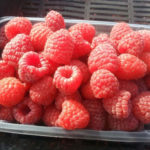
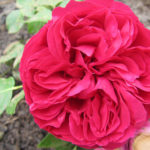
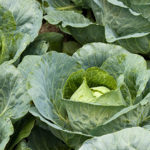
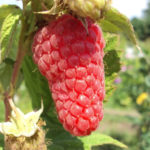
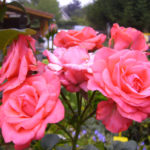
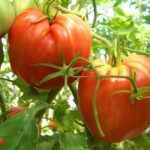



In the spring of 2011, we accidentally bought a sapling of this cherry. Although it was written that a variety with high winter hardiness, they were afraid that it would not winter in our latitudes. And next spring, our sweet cherry delighted with the first flowering. In 2013, the first berries were also tasted. Julia belongs to the mid-late varieties. And we start eating cherries in early June, when the stores are just starting to sell them.The berries are sweet and juicy. They are creamy yellow at first, and turn pinkish-red as they mature. The tree, as it was in the description, is fast-growing and vigorous. Now the upper branches can only be reached from the stepladder.
I have 2 cherry trees growing on my site, one of them is Julia. I bought a seedling and planted it in the spring. Accepted well, but began to bear fruit only in the 4th summer. Indeed, by the end of the first summer month there are red berries, but they are still sour. Although this, of course, depends on the weather. If the summer is hot and not dry, then everything begins to ripen earlier. My trees are bushy, for a sweet cherry the height is average for a tree. The yield is excellent. But I don't recommend spinning, it's better to eat plenty. Watering is necessary, since without moisture, Julia's leaves immediately wither. Quite frost-resistant tree, relative to other varieties.